Why is cradle-to-grave Call Reporting vital for your business?
It is a common saying, you can’t manage what you can’t measure. Businesses often talk about growth opportunities and leverage key changes in their routine operations to improve their team output.
However, what drives these decisions is an important metric that should be bought in attention. Unfortunately, rather than being proper data analysis these metrics are mostly verbal and subjective discussions.
As a result, the decision-makers often end up making hasty changes with no data to measure or monitor the result of those changes.
When we talk about supervising current performance and suggesting changes for improvement, reports are the most ideal solution.
A clear and effective overview of the daily business activities is essential for the heads to evaluate the current status of each employee or department.
After all, in order to make the right decisions, heads must base them on reliable and timely updated information to be certain of those choices.
According to a survey from Deloitte, 49% of respondents say that analytics helps them make better decisions, 16% say that it better enables key strategic initiatives, and 10% say it helps them improve relationships with both customers and business partners.
Well, believe it or not, a company’s survival depends on the effectiveness of those with decision making powers.
Organizations working with high and extended manpower often face this challenge of supervising their employees in an efficient yet automatic way. This is when reporting solutions enter into the picture.
Your marketing, HR, tech departments can easily file their weekly/monthly reports of the task done and you can evaluate them as per your convenience.
But, what about your team who isn’t involved with gaugeable tasks that could be logged in the end?
Here, I’m referring to your customer-facing professionals, the ones involved with your business calls.
How many prospects are connected with them? How do your agents respond? How many customers reached out for complaints? How many people apply for jobs?
Some of you might have a clue of that, while many of you may have no or absolutely wrong idea about your customer calls.
Having said that, I’d actually want to discuss what would be the results if you remain unaware of your business call activities?
Result of being clueless about your business calls Team performance can’t be measured
Organizations on average have around 30 executives involved in attending customer calls.
It goes without saying how vital calls are as a medium of customer communication and any negligence can significantly impact your brand image. Organizations which are aware of the probable damage, they do create quality supervision teams to monitor the way their executives are communicating on calls.
Now, how would you precisely monitor this communication? Can you make your quality heads roam around the executives to hear their conversation? Certainly, not!
In the absence of a reliable data or reporting structure, it can never be feasible to gain insights into your team performance.
As a result, you’ll continue to remain unaware about:
1. How many prospects were lost without optimum efforts2. How many customer calls were missed by your executives3. How many customers were mistreated by your executives4. How many refund cases came due to your team’s fault5. How many hot leads were never called for discussion
And, the list can continue.
The gist is simple, team performance can never be improved if you don’t have this data in your hand. You might continue to form new policies/regulations, but their impact could never be measured without proper reports, hence, you might end up going in the wrong direction.
Team performance can’t be supervised
While looking at the above data points, did you think of the long-run impact of these problems?
Well, to start with:
– Hampered brand image– Poor customer service– Question on company’s professionalism– Decreasing team performance– Declining quality of overall results
While we talk about reporting of customer calls and the conversation taking place between your executives and customers, we shouldn’t just focus on its impact on your team conduct. Those ten-fifteen minute’s conversation with the customer has a lot of things at stake. And, they can easily turn to your disadvantage if not checked effectively and improved appropriately.
No measurement plus no supervision means no improvement
If there are no reports to show the loopholes in your team functioning, how would you detect the changes that you actually need? You might continue to spend in your marketing to drive more leads, whereas measures should have been taken for proper follow-ups on the existing leads.
You might continue to lose business in refund cases, whereas, you should actually be correcting your executive’s way of treating customers.
With no evidence of the current problem, it’s impossible to identify the direction where changes need to be implemented.
Every business wants to optimize growth opportunities. However, some of them fail to identify the gap where work needs to be done.
Better hiring or better training or better lead quality, the fault could be in anything. It’s the proper reporting that can give you the most appropriate answer.
The complexity of large organisations with many subsidiaries makes the issue of supervision and decision-making more complicated. Here the need for reliable reporting at all levels becomes more crucial to ensure effective changes.
What is reporting of business calls?
While a lot has been written about the impact of being unaware of your business calls, it would be right to dive into the precise meaning of ‘reporting’ customer calls.
The term or concept of reporting customer calls can have different attributes, I’ve categorized them in two broad ones:
1. Qualitative aspect
While referring to proper reporting of customer calls, hearing and analyzing the conversation is an important component of the same. Recording of customer conversations enables you to comprehend your customer requirements, quality of leads driven by your marketing, level of product understanding by your agents, their way of interacting with your customers and so on.
Components like these empower you to make decisions in the required direction and even understand your customer persona. The changes could be making modifications in your marketing approach or improvising the training given to your executives.
Without hearing what your callers ask and how your executives respond, you won’t be able to upgrade your customer’s calling experience.
And it’s an inevitable fact of today that customer experience or service is one of the top-most success metrics for businesses today.
2. Quantitative aspect
Reporting of quantifiable data largely encompasses the number of calls taken, missed and made to your customers/prospects.
Businesses invest and generate leads according to the executives and needless to say, these leads are ‘valuable’. When timely calls are not done to these prospects it certainly decreases their chances of conversion and poses a question on your brand service.
Norms should be created on the number of attempts on each lead, ideal time gap between each call, maximum time by which follow-up call should be done, and more. These pointers would help you improve your customer service and team efficiency, and these points cannot be implemented without proper data in hand.
Summing it up, be it the number of calls being unattended or hang-ups done on customer calls, both are important attributes to be checked and corrected on time. And, for both the purpose, reporting of customer calls is what’s required.
Checklist of an ideal call reporting software
Now that we have gone through the ins-and-outs of call reporting, it is equally important to look at the features of your call reporting solution. This solution would precisely be an application that would generate recordings and reports of your customer calls in an effective and comprehensible manner.
Having said that, you can’t disagree with the fact that several vendors in the market today claim to provide exclusive features, competitive pricing, forged reviews and whatnot. All to outstand the competitors and lure clients.
While there is a high probability of picking the solution blindly, one should be careful while making the final decision. Certainly, you’d start searching on the internet or call your entrepreneur friends and take their advice. But, there’s one thing you should do before anything else.
Here’s a checklist that you should consider before finalising your solution or vendor:
1. The advancement in technology
Call reporting as a feature is provided by vendors in distinctive forms, be it with traditional PBX systems or heavy software. From comparatively simpler beginnings, call reporting applications have now become much more advanced and effective.
Call reporting solutions now, not only simply provide call reports but also analytical reports to assist you in better and informed decision making.
While discussing advancement, cloud companies are the emerging players in the market, for obvious reasons. Cloud-based call reporting solutions are proving to be highly beneficial for businesses looking for analytical and reliable call reports, but with no heavy CAPEX involved.
So, while you search for your solution, ensure that it is built with the latest and updated technology, something which could actually help you take leverage of the advanced and analytical reporting.
2. The customer support provided
Presently, the quality of the customer service provided is as important as product quality. It goes without saying that many companies only focus on winning customers but don’t pay any attention to their issues after the deal is closed.
While you would invest in software, you’d require assistance with multiple kinds of issues. And, here, you would never want to be stuck with a vendor who can’t assure satisfactory service with their product.
Therefore, it’s important to check the support mediums of the vendor you finalize and how accessible it is in future.
3. Additional features available
While all your call reporting solutions will generate reports for you, there are many vendors who also provide additional features alongside. The auxiliary features could include a live monitoring panel, options for downloading the recordings, sharing the reports, getting timely updates on your mobile phone and others.
In fact, the interface of your reporting panel is equally important while you look for a reporting solution. The features available on the panel, how easy-to-use it is, how fit it is for your agent’s, and so on.
As a matter of fact, the reports also vary from solution to solution. Some just generate reports of recent calls, while some show comparative representations of previous years as well.
Undoubtedly, you’d want a solution that would provide analytical reports and not just the basic ones. You’d want a solution that can show you today’s call activities in real-time as well as provide 2 years older call reports.
4. Security of the application
Security of our data is a major concern when we use any online application. Businesses often overlook this feature and later in time, it results in their lost or hacked data. While implementing a solution that would crawl your customer and executive’s phone numbers, and also record their conversation.
The call reporting solutions collect your call data records from your agent’s phone and then store them in a database. Using a software-based interface, you are then entitled to view your call records in a functional and intuitive format.
Therefore, a solution with no safety measures won’t be able to prevent your data and you might end up losing it all. Understand the security measures of the reporting solution and where your data will be stored.
P.S. Cloud solutions have proven to be the most secure ones for storing business data.
5. Customer reviews and rating
Customer reviews are no less than personal recommendations for businesses looking for different services. Well, to some extent, it’s true as well. People who are currently using that solution would be the best reference to confirm the attributes of that product.
However, it is important to note that many companies put up fraud reviews and ratings to lure customers. Where it won’t be possible for a layman to understand if the review is genuine or not, these ratings and feedback will act just for comparative purposes between different solutions.
After all, when everything else seems fine, there is no harm in checking the customer ratings of the respective solution/vendor, just to be on the right page.
6. Scalability options
You might receive 10 calls today and 100 calls next week and 10000 next month. What if your solution has limited capacity and can’t report/record more than 500 calls?
Problem, isn’t it?
This is why it is crucial for us to implement a solution which can easily handle your increasing call volume and store all the data without any glitch.
One can never be sure of the future usage and therefore, we should onboard a solution which could easily handle your business growth.
To tell it concisely, some of you might think of call reports as an add-on or extravagance. Well, had it been 2010 I would have agreed but not anymore. It’s 2020, advancement has increased manifolds, Forbes agrees!. Just like you need to have proper data of your revenue, similarly, you ought to have proper reporting of your everyday calls to assure constant and easy supervision.
So, step up for the effective supervision of your customer calls and leverage changes in the right direction with proper call reporting.
10 best affordable heart rate monitors: how to track your beats per minute on a budget
Self-tracking is nothing new. Professional athletes and trainers have monitored their personal metrics for decades in an effort to improve performance, while doctors and clinicians have studied medical data for even longer to improve patient health.
But in the last few years, interest in biometrics has increased exponentially, and it's hard to find a wearable these days that doesn't offer some form of heart rate tracking, a metric which remains arguably the best indicator of overall health.
The prevalence of heart rate trackers is particularly good news for health-conscious consumers, because in such a competitive space, getting a decent tracker no longer costs the earth.
In this article then, we've - in no particular order - rounded up the best affordable wearables in 2020 that incorporate heart rate tracking into your daily activity and exercise routine.
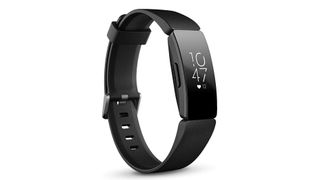
Inspiration to get off the sofa
Premium design
Lots of tracked metrics
Screen can be unresponsive
Almost all of Fitbit's fitness trackers now offer heart rate monitoring, but it’s the Fitbit Inspire HR that we think makes the most of the Fitbit app's HR features at an affordable price.
The Inspire HR is noticeably thin and light on the wrist, while the black and white touchscreen keeps things simple, with a left and right swiping gesture revealing your daily stats. These include your step count and calories burned, as well as your resting heart rate, which is a key indicator of overall health.
With over 15 exercise modes to choose from, it's Fitbit's most full-featured affordable tracker to date. Perhaps surprisingly at its budget price point, the Inspire HR is also waterproof and can track swimming lengths, too.
Still, if you're looking for something from the same company that offers a few more fitness feature chops, check out the Fitbit Charge 3, which also makes our roundup.
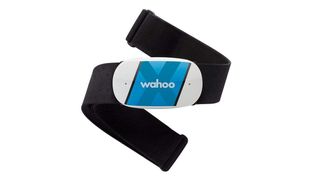
Waterproof
Accurate
Feels weird at first
Despite the marketing spiel of wrist-based heart rate monitors, nothing beats a heart rate monitoring chest strap for accuracy, especially if your training regime involves irregular movement (think HIIT workouts involving various exercises in quick succession).
The Wahoo Tickr X meets these challenges and then some, offering motion analytics and real-time data through its wide compatibility with fitness apps like Nike Run Club and MapMyFitness.
The Bluetooth waterproof tracker on the strap is a plastic pebble that houses a battery which lasts around 12 months, and it features vibration alerts and two LEDs to display wireless connection and heart rate detection.
The strap also tracks calories burned as well as running analytics - including cadence and ground contact time - that can be synced after your workout. On first wear it feels weird, but it's so light that after a few minutes you don't even notice it. Reasonably priced, discreet, insightful - what's not to like?
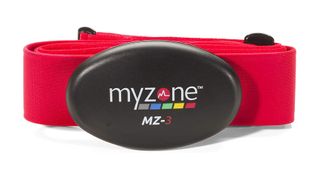
Motivating Points System
Integrated workout memory
Not for all-day wear
Like the Wahoo Tickr X, the MyZone MZ-3 chest strap achieves high-accuracy heart rate tracking whatever activity you're performing, but it also gamifies your workout by tracking your heart rate zones and awarding MyZone Effort Points (MEPs) based on how hard your heart is working.
The strap streams data to the accompanying MyZone mobile app, allowing you to see which zone you're in during your workout and ramp things up or slow down accordingly. Five color-coded HR zones indicate increasing levels of effort, and you earn a different number of MEPs for every minute you can stay in each zone.
In addition, the MyZone app offers guided workout sessions that challenge you to reach different levels of intensity. And even if you don't have your smartphone handy, the strap's built-in memory will record your session data and upload it to the app the next time it's in range.
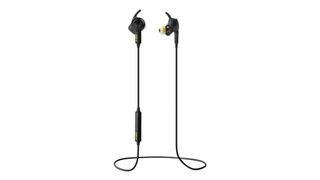
Heart rate-tracking headphones
Good sound
Decent noise isolation
Battery life could be better
The Jabra Sport Pulse headphones track your heart rate from inside your ear, because science! Basically, the heart rate monitoring and oxygen consumption tech is packed into the left earbud, where a light sensor reads off the small blood vessels close to the skin surface in your ear and sends the data to the Jabra mobile app.
Behind the right bud meanwhile there's a USB charging port, with a single charge providing 4.5 to 5 hours' use - not great, but not terrible considering the tech it's powering.
The short cord on these wireless Bluetooth buds sits comfortably behind your neck, and the included clip keeps it raised to prevent it from swinging, while the conveniently placed inline remote offers volume and music playback controls.
Audio-wise, the buds pipe through the soundtrack to your run with punchy clarity, and their noise isolation is pretty decent too.
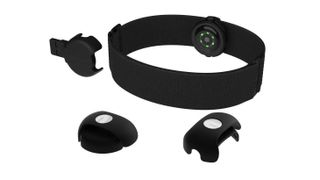
Accurate HR tracking
Arguably comfier than a chest strap
No on-device display
Chest strap heart rate trackers may offer more accurate readings than a wrist-based device, but if you find them uncomfortable to wear then it's worth taking a look at the Polar OH1, which can be worn on the upper or lower arm.
Thanks to its placement away from the wrist joint, the Polar OH1 generally achieves a more consistent heart rate reading. It's also capable of recording 200 hours of training, so there's no constant need to sync it to your smartphone over Bluetooth. That said, if you want to see your heart rate in real time during a workout then you'll need to use it with the Polar Beat app.
The arm strap offers 12 hours of battery life, is waterproof up to 30 meters, and can pair with gym equipment as well as most third-party apps that support Bluetooth heart rate straps.
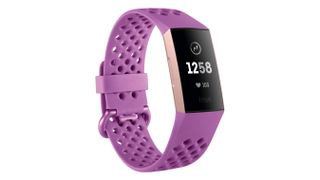
Over 15 goal-based exercises
Smartwatch features
Fitbit Pay not universally supported
If you're looking for an affordable heart rate tracker with extra smartwatch smarts that's built for more intensive workouts, the Fitbit Charge 3 should fit the bill. It may be bulkier than the Inspire HR, but the bigger display includes features like calendar and weather, not to mention support for smartphone app alerts and the ability to send quick replies to messages.
As you'd expect, the Charge 3 includes continuous heart rate monitoring and automatic exercise recognition, but it also offers real-time heart rate zones, so you can see at a glance when you're in Fat Burn, Cardio, or Peak zones and ensure you're making the most of your workout.
It's waterproof too (up to 50 meters), so you can track your time in the pool, while the breathable strap keeps things comfortable whatever activity you're engaged in.
Fitbit's auto sleep tracking makes it worth wearing around the clock, and can offer personal insights into your rest. To round things off, it also has a built-in blood oxygen sensor that's able to detect breathing irregularities and can help identify conditions like sleep apnea.
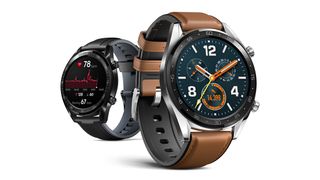
Bright OLED display
Stunning battery life
Lack of HR data syncing options
Now available at half of what it launched for in late 2018, the Huawei Watch GT inches into our round-up of affordable heart rate trackers, and it comes with an impressive raft of smart features, and a fantastic 30-day battery life to boot.
Running on the company's own LiteOS operating system, Huawei's stylish wearable boasts a responsive 1.4-inch color OLED touchscreen that you can swipe to keep tabs on real-time heart rate, activity rings, and sleep quality, as well as to access on-watch apps like timer, weather, compass, barometer, and the like.
A wealth of activity tracking options are on offer, including cycling, swimming, hiking, climbing, and even training courses for beginner runners. You can also adjust and keep track of your heart rate zones using the Huawei Health app, although there are few ways to sync your heart rate data to other apps, which is about our only real bugbear at this price point.

Smart features on a budget
Impressive touchscreen
Smartwatch features
Fiddly charging cradle
For an unabashedly budget fitness tracker, this wrist-based offering from LETSCOM has a few impressive tricks up its sleeve.
The lively color touchscreen offers four watch faces to choose from and supports multiple swipes to access various features, including up to 8 workout types, a music controller, guided breathing, fitness data (including live heart rate readings) and even smart notifications from your phone.
GPS tracking during workouts is offloaded to your mobile device via the VeryFitPro app, but otherwise the step, heart rate, and sleep tracking are remarkably accurate. Granted, it's no Apple Watch beater, but there's relatively little to complain about at this price.
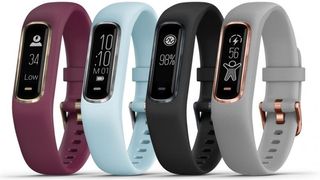
Seven-day battery life
Swim-proof
No GPS
Garmin has garnered a reputation for making fitness trackers that are packed with voluminous exercise activities and matched with deep statistical analytics, and its most affordable models don't disappoint in this regard.
Apart from its real-time heart rate monitor, the Garmin Vivosmart 4 also features VO2 max testing for cardio workouts and heart rate variability (HRV) stress scores that can alert you to take a break. There's even something for weightlifters, thanks to the tracker's ability to count reps.
Garmin's device augments all these features with a 'Body Battery' monitor that gauges your energy levels and can help you decide how ready you are for your next workout. And if that wasn't enough, the Vivosmart 4 includes a pulse oximeter sensor, which can help detect conditions like sleep apnea.
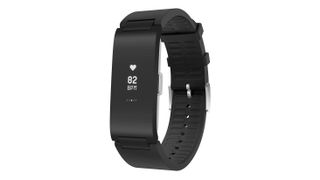
Sleek wrist-based tracker
Excellent battery life
Sleek design
No 24/7 HR tracking
Despite not being a smartwatch, this sleek tracker from Withings has several things going for it. For one, it's hardly any bigger than a wristband, yet it manages to pack in a monochrome raise-to-wake OLED screen that displays your activity stats at a tap and tells you how close you are to your daily goal.
The Withings Pulse HR tracks a vast range of exercise types and comes with connected GPS support, so you can log your workouts on a map so long as you have your phone with you.
The 20-day battery life is also particularly impressive, although that's offset by the fact that the Pulse HR only reads your heart rate every 10 minutes unless you're in workout mode, which drains the battery a lot quicker.
Still, the Pulse HR's sleep tracking smarts are commendably accurate and extend to duration, depth, regularity and interruptions. That's great if you're looking for insights into your bedtime habits, but if you're also after real-time 24-hour heart rate tracking, a Fitbit is probably a better option.
6 Money Moves You Can Make in an Hour to Improve Your Financial Health
Log onto the IRS withholding calculator, which will help you determine your correct withholding allowances. Once you have the correct number, take a trip to your HR department to get a new W4 form to adjust your withholding. Depending on how quickly your HR department handles paperwork, you could start seeing fatter paychecks with the next pay cycle.
You can even compound this good decision by setting up an automatic transfer of the money to your savings account, or increasing the percent of your retirement account contribution.
4. Sign up for overdraft alerts
Overdrawing your account is remarkably easy to do. Some banks will protect your transactions from overdraft by transferring money from a linked savings account or line of credit. But while overdraft protection theoretically will take care of any oopsies you have, you usually have to pay a hefty fee when this "protection" kicks in.
A better option is to set up an alert from your bank to let you know when your account is in danger of overdraft. These real-time alerts send you an email or text message whenever your account dips below a dollar amount that you specify, giving you the time to transfer or deposit money to avoid an overdraft before it happens.
5. Update your beneficiaries
Comments
Post a Comment